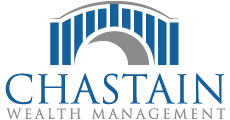Midyear Market Update
Navigating Volatility
Merriam Webster’s dictionary defines the word “volatility” as a tendency to change quickly and unpredictably. The first known use of the word was in 1626, right about the time the Dutch East India Company came into existence.
Abbreviated to “VOC” in Dutch, the Dutch East India Company (VOC), was granted a 21-year monopoly on the Dutch spice trade with India. It also became the first public company in the entire world when they formally listed on the Dutch stock exchange. (Up to that point, they’d used loans and bonds to fund their voyages.)
As their business continued to grow – and their trade drifted farther and farther beyond Holland – they realized they needed more time to pay back their lenders. The solution was a longer-term instrument (i.e., a stock certificate), which gave holders a piece of ownership in the company they could sell. In addition, it paid dividends once the ship returned (sometimes with spices instead of cash)!
Where am I going with this? Stock investing – and volatility – have been around a long time; long before the existence of American stock markets, or even the United States itself. So, if you think the wild ride that stocks take you on is something new, it isn’t. The VOC’s stock price fluctuated just as much in the 1600s as U.S. stocks do today. Stocks have always been riskier than other investments, regardless of what country you live in; however, the long-term returns are higher, so you’re paid to take this wild ride.
This year, the stock market feels especially volatile. The Fed raised interest rates, there’s a threat of tariffs and trade wars, and Facebook’s CEO has been summoned to Washington D.C. So yes, things may seem rocky, but keep in mind that last year was one of the least volatile years on record. The U.S. stock market had very few down days in 2017 – a departure from most years, which on average, see at least one 10% drop and five 5% drops from peak to trough.
Today’s economy is strong though and most economists expect the U.S. to grow more than 5% in the second quarter. Unemployment rates haven’t been this low since 1969, and inflation is increasing at a healthy rate. In addition, this year’s corporate earnings worldwide are very robust so far and U.S. earnings per share are expected to grow 27% in 2018 (driven mainly by the large corporate tax cut in the latest tax bill passed by Congress).
This bodes well for stocks; however, most of this good news was priced in the market last year. This explains why the global stock index remained flat to slightly negative at the end of second quarter. Internationally, trade war fears linger; yet markets were unnerved by the U.S. subjecting another $200 billion of Chinese goods to tariffs. If trade war fears subside, we should see an increase in global market returns by the end of the year.
Going forward, U.S. stock valuations still look high, while international developed and emerging market equities appear reasonably priced. Once the tax cut “sugar high” wears off, the rising U.S. debt, trade deficit, and interest rates are expected to slow things down domestically. That’s why we favor stocks outside the U.S. right now. At the same time, in this rising interest rate environment, our bond portfolio is spread among 5,000 different bonds – of all different maturity dates – including a good dose of inflation-protected securities found in our TIPS funds to protect against higher inflation.
Regardless of the rough seas and storms that may occur along the way, like VOC, we’ll continue to navigate this ship (i.e., your portfolio) so, at the end of your journey (i.e., retirement), you will have peace of mind.

Author: Steinberger Consulting provides expert advice to Registered Investment Advisors and other clients. Steinberger Consulting is owned by Lane Steinberger who has over 20 years experience managing money. Steinberger holds both the Chartered Financial Analyst® and CERTIFIED FINANCIAL PLANNER™ designations. In 2016, he earned his Doctorate in Business at Georgia State University.

